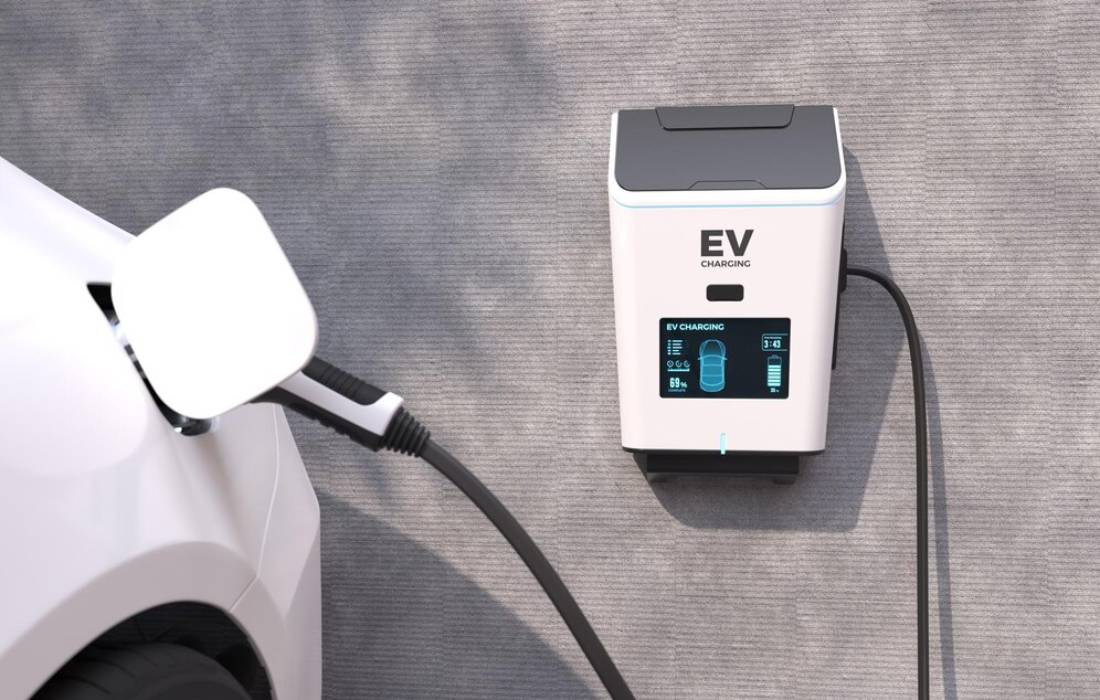
How Solid-State Batteries Will Change EVs Forever
Thanks to new solid-state battery tech, the electric vehicle (EV) industry is ready for a big leap. These new powerhouses will likely outperform traditional lithium-ion batteries. They offer lightning-fast charging, better energy density, improved safety, and longer lifespans. This innovation can solve problems for EV makers and users. It will make electric mobility smoother and more efficient.
Solid-state batteries are becoming key to clean transportation as the world shifts to sustainable energy solutions. They skip flammable liquid electrolytes, improving safety and boosting efficiency. This groundbreaking technology changes the game for EVs. It could also transform energy storage, consumer electronics, and aviation.
In this article, we will explore solid-state batteries. We’ll discuss their many benefits, current research, and the challenges they face. Join us as we discover how these batteries will illuminate the road to the future of EVs.

What Are Solid-State Batteries?
Solid-state batteries differ from conventional lithium-ion batteries in their internal structure. Instead of using a liquid or gel-based electrolyte, they rely on a solid electrolyte, which enhances performance and safety.
Key Components:
- Solid Electrolyte – Eliminates the risk of leaks and thermal runaway.
- Higher Energy Density Materials – Allows more energy to be stored in a smaller space.
- Improved Conductivity – Enables faster charging and discharging cycles.
- Anode and Cathode Innovations – Silicon and lithium-metal anodes take the place of graphite. This boosts battery capacity and efficiency.
Switching from liquid to solid-state greatly impacts EV performance, range, and long-term costs.

The Advantages of Solid-State Batteries
1. Increased Energy Density
- Solid-state batteries can hold 2-3 times more energy than lithium-ion equivalents.
- This means longer driving ranges for EVs, reducing the need for frequent charging.
- A typical EV with a 300-mile range can reach 600-900 miles with solid-state technology.
2. Faster Charging Times
- Due to superior conductivity, EVs equipped with solid-state batteries could charge in under 10 minutes.
- This technology eliminates long charging wait times, making EVs more convenient.
- Charging infrastructure improvements will also play a role in integrating this technology effectively.
3. Enhanced Safety
- Unlike lithium-ion batteries, solid-state batteries are non-flammable and less prone to overheating.
- Eliminates risks of thermal runaway and battery fires, increasing reliability.
- No toxic liquid electrolytes mean fewer environmental hazards.
4. Longer Lifespan
- Solid-state batteries last longer than traditional EV batteries. They degrade less over time and can last twice as long.
- This reduces the frequency and cost of battery replacements.
- Some projections suggest that solid-state batteries could maintain 90% of their capacity even after 10 years of use.
How Solid-State Batteries Will Transform the EV Industry
1. Lower Vehicle Costs Over Time
- Even though solid-state batteries cost a lot to develop at first, making them in large numbers will lower EV prices over time.
- A longer lifespan means fewer battery replacements, lowering maintenance costs.
- By 2030, battery prices are expected to fall below $50/kWh, making EVs cheaper than gasoline cars.
2. New Vehicle Designs
- Higher energy density leads to lighter batteries. This helps manufacturers create sleeker and more efficient EVs.
- Increased space for passengers and cargo due to smaller battery packs.
- Automotive brands can experiment with new aerodynamics and vehicle weight reduction.
3. Better Cold-Weather Performance
- Lithium-ion batteries struggle in the cold, but solid-state batteries work well even in extreme temperatures.
- This is a game-changer for EV adoption in colder regions like Canada, Norway, and Russia.
Quick Guide
Why Solid-State Batteries Are the Future of EVs
- More Range: Up to 3x the energy density of current batteries = fewer charging stops.
- Faster Charging: Full charge in under 10 minutes.
- Improved Safety: No flammable liquid = lower fire risk.
- Longer Life: Can retain 90% capacity after a decade of use.
- Broader Impact: Tech applies to EVs, smartphones, aviation & renewable energy.
Pro Tip
Solid-state isn’t just about range—it’s also about freedom. EVs with these batteries could operate efficiently in cold climates, charge faster than your coffee brews, and last longer than your lease. Keep an eye on the 2027 model lines—change is coming fast.
Important
Solid-state battery tech is still in development. While promises are high, so are the costs and production hurdles. But as with all breakthroughs, early-stage challenges often give way to industry-defining change.

The Future of Solid-State Battery Development
Current Progress
- Toyota, Samsung, and QuantumScape are at the forefront of solid-state battery research and development.
- Toyota aims to launch solid-state battery-powered EVs by 2027, claiming a 900-mile range and 10-minute charge time.
- QuantumScape’s advances in lithium-metal anodes show big gains in how long they last and how fast they charge.
Challenges to Overcome
- High Manufacturing Costs: Solid-state batteries are costly to make. They need new production methods.
- Scalability Issues: Mass production needs to be perfected for global rollout.
- Infrastructure Adaptation: Charging networks and vehicle designs must adapt to new technology.
- Material Availability: We need to source lithium metal and other advanced materials sustainably. This means developing a reliable supply chain.
Industry-Wide Collaborations
Many companies are teaming up with research institutions. They want to speed up the shift to solid-state battery technology. For example:
- Ford and BMW have invested in Solid Power, which commercialises solid-state batteries.
- Volkswagen has partnered with QuantumScape to integrate solid-state batteries into future vehicle models.
Impact Beyond Electric Vehicles
EVs mainly benefit from solid-state battery technology, but its effects reach beyond cars:
Consumer Electronics
- Solid-state batteries could lead to longer-lasting smartphones, laptops, and smartwatches.
- Faster charging and improved safety would enhance user experience.
Renewable Energy Storage
- Solid-state technology can boost grid-scale battery storage. This helps balance solar and wind energy.
- Efficient, long-life storage systems can reduce dependency on fossil fuels.
Aviation and Aerospace
- Electric aircraft and drones require high-density batteries with lightweight components.
- Solid-state batteries could revolutionise electric flight.
The Road Ahead
Expected Adoption Timeline
- 2025-2027: Prototype vehicles featuring solid-state batteries.
- 2027-2030: Limited commercial rollout in high-end EVs.
- 2030-2035: Mass production and mainstream adoption.
- Beyond 2035: Dominance of solid-state batteries across multiple industries.
Policy and Government Support
- Governments worldwide are offering grants and incentives for battery technology advancements.
- The EU and US have allocated billions in funding for next-generation battery research.
- China’s rapid investment in solid-state battery technology could accelerate global adoption.
Top 5 FAQs
1. What’s the difference between lithium-ion and solid-state batteries?
Solid-state batteries use a solid electrolyte instead of a flammable liquid one. This makes them safer, more energy-dense, and potentially much longer-lasting.
2. How much longer will EVs run on solid-state batteries?
Early models project up to 900 miles per charge—double or even triple current lithium-ion ranges.
3. When will solid-state batteries be available in consumer vehicles?
Prototype vehicles are expected by 2025–2027, with limited commercial models in high-end EVs by 2030. Wider adoption should follow soon after.
4. Why are solid-state batteries safer?
They eliminate the risk of thermal runaway and battery fires, thanks to non-flammable materials and more stable internal chemistry.
5. Are other industries adopting solid-state tech too?
Yes—consumer electronics, renewable energy storage, and aviation are all exploring or already integrating solid-state battery solutions.
Conclusion
Solid-state batteries are ready to ignite a revolution in the EV landscape. By tackling the critical flaws of lithium-ion technology, they pack a powerful punch. These batteries offer great energy density, solid safety, and long life. They will help make electric cars more efficient, reliable, and easier to access.
Hurdles are ahead, but innovation keeps moving. Solid-state EVs may be on our streets in the next decade. This leap into new technology is not just possible; it’s certain. It brings a new age of sustainable transport.
As governments and trailblazing companies pour resources into mass production, solid-state batteries will soon reign as the gold standard in global energy storage. The next ten years will be crucial for this journey. One thing is clear: the future of EVs is solid-state.


